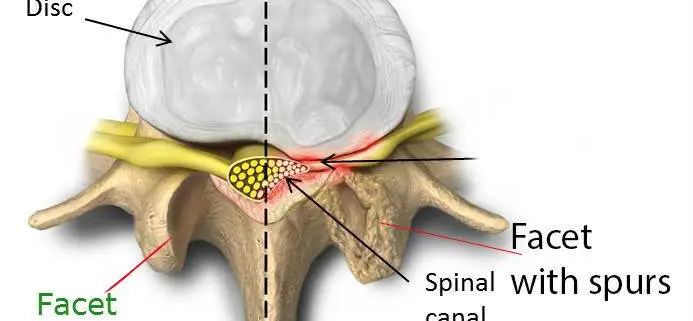Lumbar Facet Joint Arthritis

Overview
Lumbar Facet Joint Arthritis, often simply referred to as facet arthritis, is an age-related condition characterized by degeneration of the facet joints in the lower back. The facet joints connect the spine’s vertebrae and enable movement, such as bending and twisting. When these joints start to wear and tear, arthritis can set in, causing pain and limited mobility. It’s a common health issue, prevalent especially amongst older adults. Understanding facet arthritis is the first step towards managing its symptoms and maintaining quality of life.
Types
Though Lumbar Facet Joint Arthritis is most commonly referred to as a single type of arthritis, experts often categorize it into three broad types, based on the underlying causes:
1. Osteoarthritis of the facet joints: This is the most common type, characterized by gradual wear and tear of the facet joints with age.
2. Rheumatoid Arthritis in the facet joints: It’s an autoimmune disorder that results in inflammation of the joint.
3. Post-traumatic arthritis of the facet joints: It occurs after a direct injury to the joint.
Causes
Lumbar Facet Joint Arthritis generally develops due to age-related wear and tear, making age a primary risk factor. However, other potential causes and risk factors include:
– Genetics: A family history of arthritis increases the risk.
– Overweight or obesity: Extra weight puts more pressure on the joints, increasing wear and tear.
– Prior injury or trauma: Past spinal injuries may cause early onset of arthritis.
– Improper posture: Long-term bad posture can speed up joint degeneration.
Symptoms
Patients with Lumbar Facet Joint Arthritis commonly experience:
– Lower back pain, especially after physical activities
- Stiffness in the morning
– Difficulty bending or twisting the lower back
– Radiating pain to the buttocks or back of the thigh
Less common symptoms might include muscle weakness or numbness.
Diagnosis
Diagnosis of Lumbar Facet Joint Arthritis begins with a thorough medical history and physical exam. Doctors also usually order imaging tests such as:
– X-rays: To identify changes in the joints.
– Magnetic Resonance Imaging (MRI): To view details of the soft tissues.
– Nerve blocks: To confirm a diagnosis if other tests are inconclusive.
Treatment Options
Treatment of Lumbar Facet Joint Arthritis aims at relieving pain, improving mobility, and retarding the progression of the disease. Treatment plans often include:
– Physical Therapy: Strengthercises to improve muscle support around the joints.
- Over-the-counter pain relievers: Such as NSAIDs for temporary relief from mild to moderate pain.
– Prescription Medications: For more severe pain, doctors may prescribe stronger medications.
In some cases, when conservative treatments fail to provide relief, surgeries such as spinal fusion or facet joint replacement may be recommended.
Living With Lumbar Facet Joint Arthritis
With some practical adjustments, patients can manage the condition effectively. This might include:
– Regular Physical Activity: Gentle exercises can help maintain joint flexibility.
– Weight Management: Maintaining a healthy weight reduces pressure on the facet joints.
– Heat and Cold Therapy: They can help to alleviate pain and inflammation.
– Proper Posture: Maintaining good posture can minimize joint degeneration.
When to Seek Help
While Lumbar Facet Joint Arthritis is a chronic condition, it’s important to seek immediate medical attention if:
- Pain becomes severe or interferes with daily activities.
– Symptoms worsen or don’t improve with treatment.
– New or unusual symptoms, like sudden numbness or weakness, appear.
Always remember, early diagnosis can help in managing Lumbar Facet Joint Arthritis more effectively.
